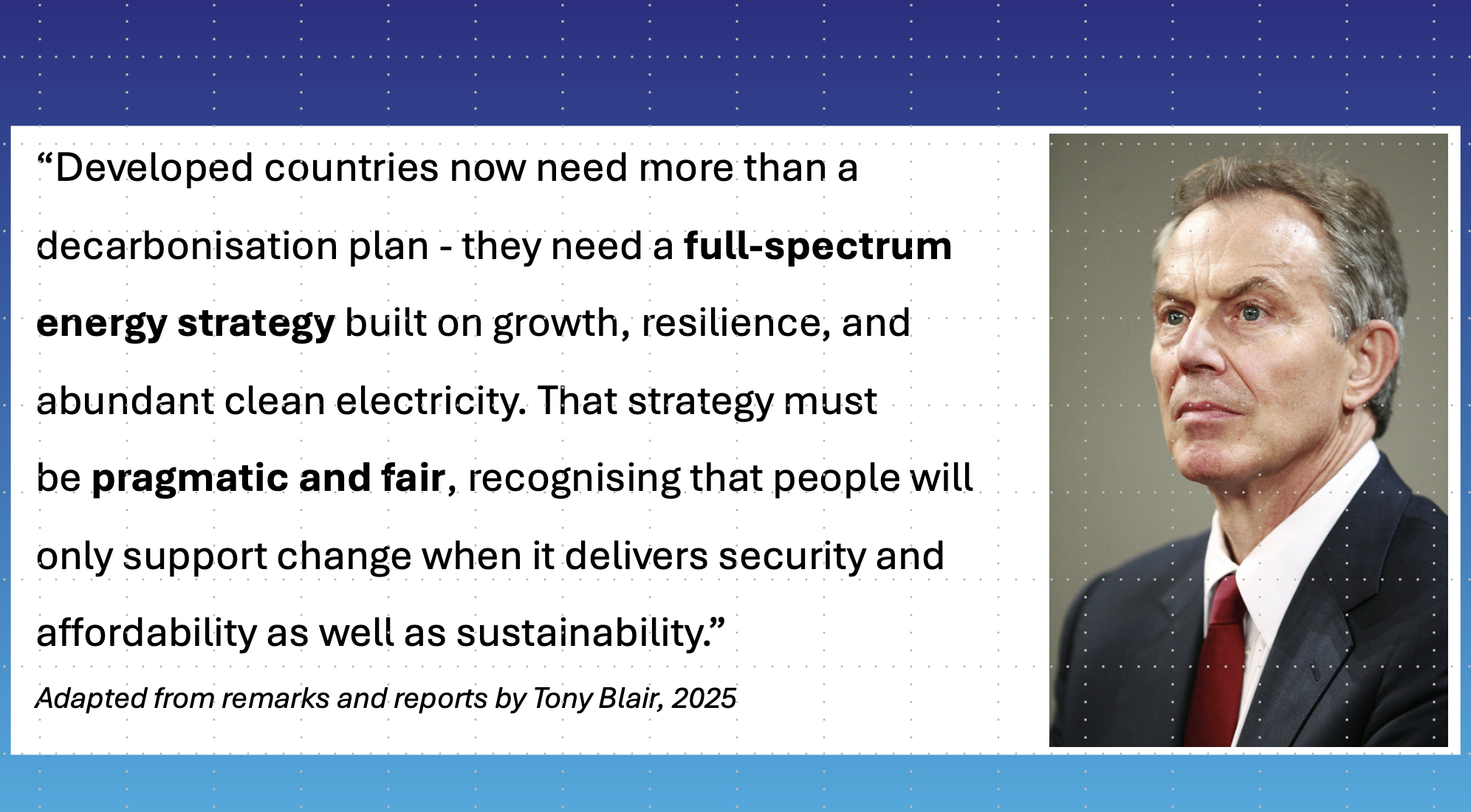Our Approach
The Challenge:
The Challenge
The shocks of Covid and the war in Ukraine have reshaped the global energy landscape — exposing the tension between security, affordability, and decarbonisation.
Across industries, companies face sustained pressure from volatile energy markets, shifting regulation, and growing stakeholder expectations. The politicisation of “net zero” and the rise of greenhushing have added complexity — but the long-term direction remains clear: consumers, investors, and partners expect credible pathways to lower-carbon growth.
Long-term competitiveness now depends on managing risk and opportunity across the full energy spectrum: securing reliable, affordable energy today while preparing for a cleaner, technology-driven future.
Incremental change is not enough. Pragmatism, innovation, and bold execution are the new strategic imperatives.
The Opportunity:
Volatility in energy markets creates openings for strategic advantage. Organisations that succeed will be those that ride the uncertainty with pragmatic resilient strategy underpinned with line of sight to executable, value-accretive projects.
Demand for reliable, cleaner, and competitively priced energy continues to grow, offering opportunities to optimise assets, deploy proven low-carbon technologies, and enhance operational resilience.
BluEnergy helps clients:
Develop pragmatic resilient deliverable strategy
Deliver practical, low-carbon solutions that improve reliability and reduce costs.
Turn a matter of ‘cost compliance’ into value accretive investment opportunities.
Address key risk through providing a bridge between ESIA & planning compliance and Community Acceptance
Structure bankable, commercially viable projects that attract investment and de-risk delivery.
Build balanced energy portfolios that integrate cleaner growth without compromising affordability or security.
In a market shaped by disruption and politicisation, execution, not aspiration, defines leadership. BluEnergy focuses on tangible projects that turn the pressures of transition into long-term competitive advantage.
How We Work
Strategy and Risk Evaluation
Understand company drivers
Current goals, strategy and plans
Review with pragmatic, implementation based lens
Understand & articulate risk exposure in terms of current plans
Suggest alternative or pivots in strategy to optimise clients long term needs
Develop implementation options against strategy & risk identification
Specialists in CCUS, Blue Hydrogen/Ammonia; other clean Hydrogen & green electron optionality
Cost and Economic modelling
Option ranking and selection
Key risk mitigations: commercial & investment; technical (sub-surface & project); non-technical (community acceptance)
“One Stop Shop” support as required:
Detailed business planning & economic modelling
Commercial negotiations support
Project planning and implementation overview
Community Acceptance overview to complement ESIA & compliance
Sub-surface characterisation management and licence application
Project implementation as required





